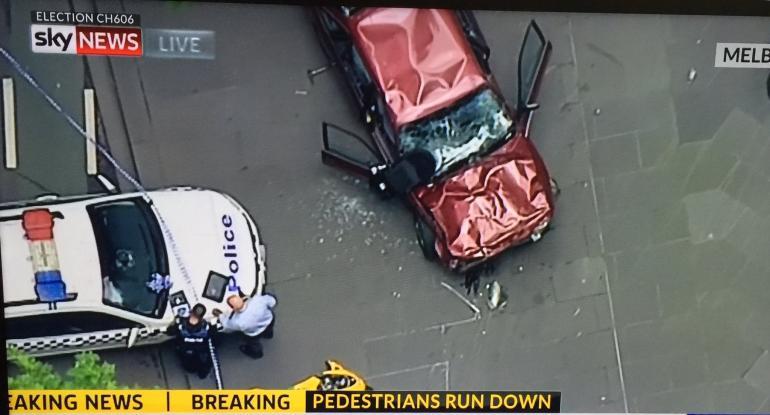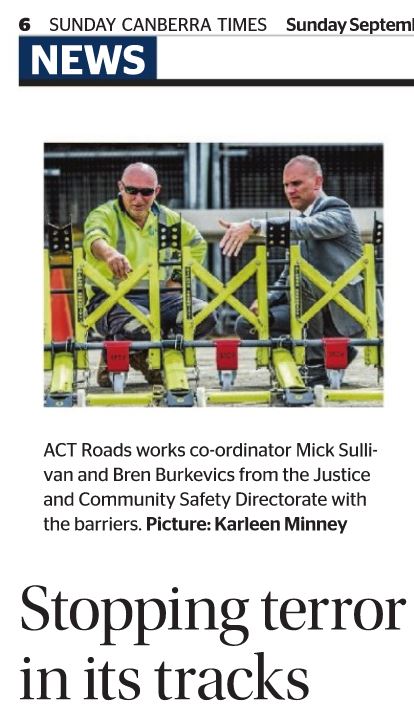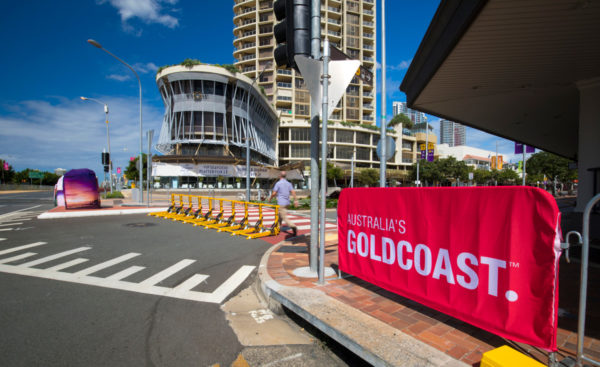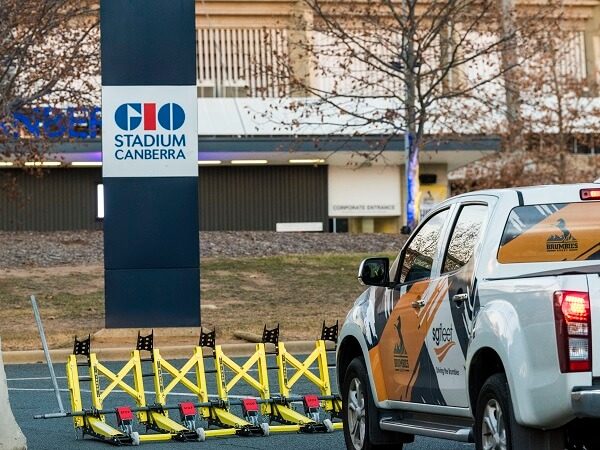Recently a range of media outlets reported on local community events being cancelled due to the costs of what they perceived as unrealistic counter-terrorism security measures.
However, multiple vehicle attacks in Melbourne highlight how real the threat is to the community. We can no longer assume “it won’t happen to us”.
And while terrorism is one consideration raised by the media in relation to community safety at events and crowded places, there is the equal threat of out of control vehicles, particularly for events on or near roads.
A recent Western Australia Parliamentary report stated:
“a vehicle driven at speed into a crowd of people will have the same impact regardless of whether the driver is ‘a drunk driver’, an elderly person having a medical episode or a person with criminal intent” Community Development and Justice Standing Committee.

So what’s all the fuss
Recognising the very real risk of vehicle attack in crowded places, the ANZ Counter Terrorism Committee has developed the hostile vehicles guidelines for crowded places. It’s these guidelines that are causing some friction with local communities and event organisers, with police now insisting that this is the benchmark for event security.
Temporary vehicle barriers that meet international crash rated standards, and the counter terrorism guidelines, can be perceived as an expensive one-off investment for event organisers. Though just as counter terrorism efforts need to be approached in a whole new way, so too does the costing model to make it achievable for event organisers to protect the public from hostile or out of control vehicles.
 A shared model of responsibility and cost
A shared model of responsibility and cost
Rather than looking at each individual event on a case-by-case basis, government and major event venues can use a shared funding model to support their community safety objectives while ensuring events can still run safely and cost effectively.
In the same way that permanent community safety infrastructure is resourced and delivered around public places such as shopping malls, main streets and event venues – temporary security infrastructure such as vehicle protection barriers can be delivered with the costs shared across government cost centres, and with the private event organisers over the life of the vehicle barrier utilisation.
The community shared model
The community shared model for hostile vehicle mitigation has been developed and delivered by Protective Barriers Australia successfully over the past 18 months with two prominent examples being Queensland Government as part of the legacy from Commonwealth Games and more recently the ACT Government in Canberra, recently featured in a media article by the Canberra Times. See article
Here’s how the community shared model works:
1.Government or major venue purchases or leases internationally crash rated vehicle protection barriers. Relies on barriers that are built with longevity of life a factor and flexibility for deployment – a modular system with units that can be installed at any length required for different road widths and situations.
2. Vehicle protection barriers are stored at central location/depot for easy access and deployment such as Council / Roads depot.
This relies on barriers that are compact and easy to store and deploy without the need for trucks or special equipment.
3. Installation training provided to government or venue managers by supplier. Relies on easy to deploy and use vehicle barriers that can be assembled by one individual with no specific vehicles, equipment or tools.

4. Access and deployment
Event organisers (government and private) simply book and pay for the cost of deployment, making it cost effective for both large and small events, while ensuring effective protection under the hostile vehicle guidelines. The cost of the temporary vehicle barriers is then able to be spread throughout the year/s over the life of the vehicle barriers utilisation.
Community Shared Model Examples
Queensland Government / Commonwealth Games Legacy
Queensland were in a unique position of being able to leverage a major sporting event in the Gold Coast Commonwealth Games. A range of infrastructure from the games has been gifted as part of the legacy, including temporary vehicle protection barriers. This is now stored centrally with the assets made available to event organisers, stored centrally by a division of their Roads authority, recovering just the cost of deployment for each event. In this case the Queensland government investing in the asset, making it available for events big and small, with individual event managers only having to cover the cost of deployment. Making it affordable. See case study here

ACT Government
The ACT Government runs numerous community events throughout the year including street parades, New Year’s Eve celebrations, festivals and official openings. They also own and manage a range of venues such as stadiums and sporting facilities that play host to AFL, NRL and international sporting fixtures and concerts. For events international crash rated vehicle barriers are stored centrally with the cost of deployment covered by each event.. The nation’s capital is leading the way, and all regions of Australia are set to follow. See case study here.

At Protective Barriers Australia, we’re committed to ensuring communities are safe so we can all enjoy the lifestyle we’re lucky to live. If you’re trying to understand the hostile vehicle guidelines and how to make it work cost-effectively, talk to us about the shared community shared model and demonstration and trial for your upcoming events today.


